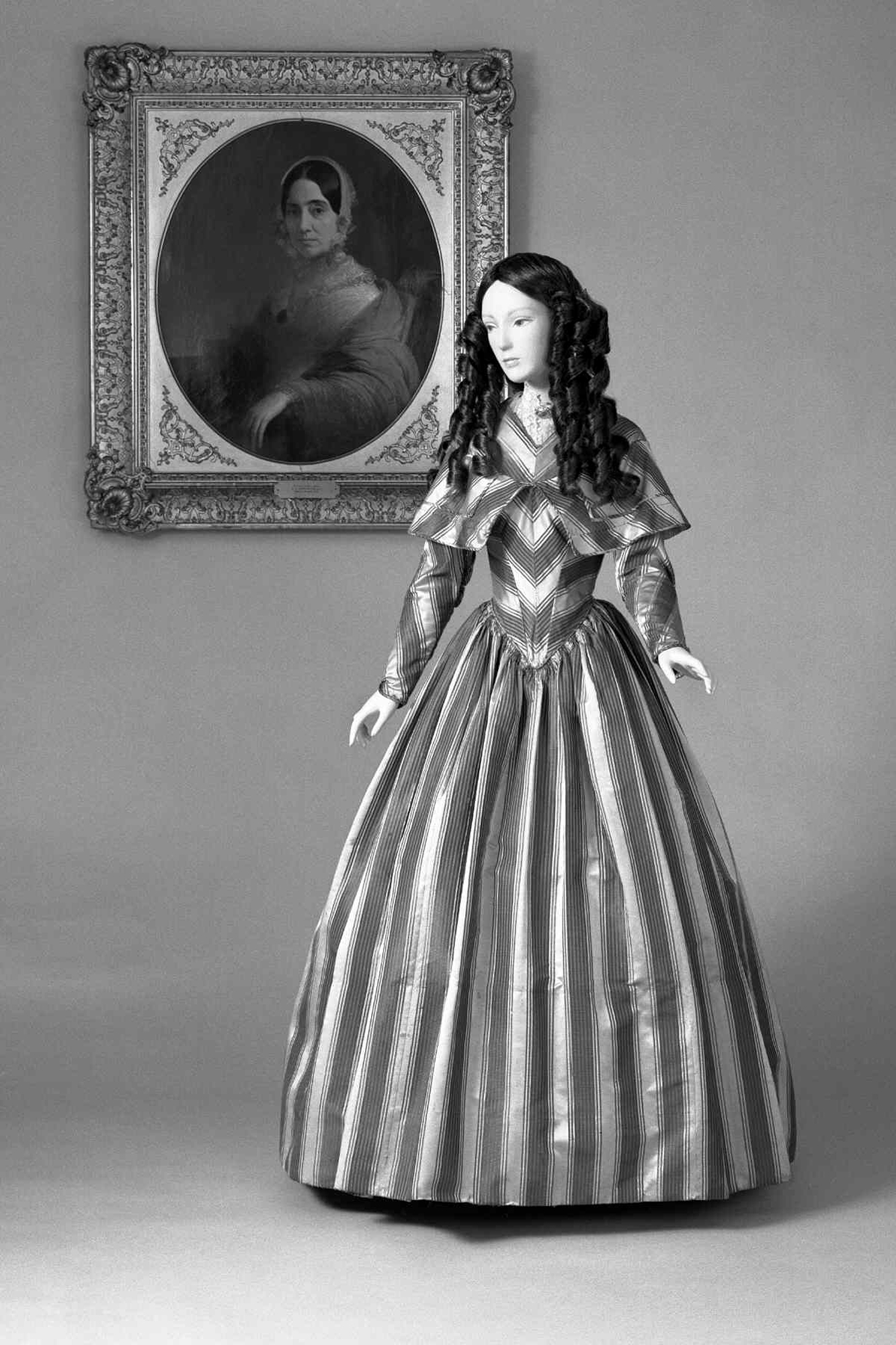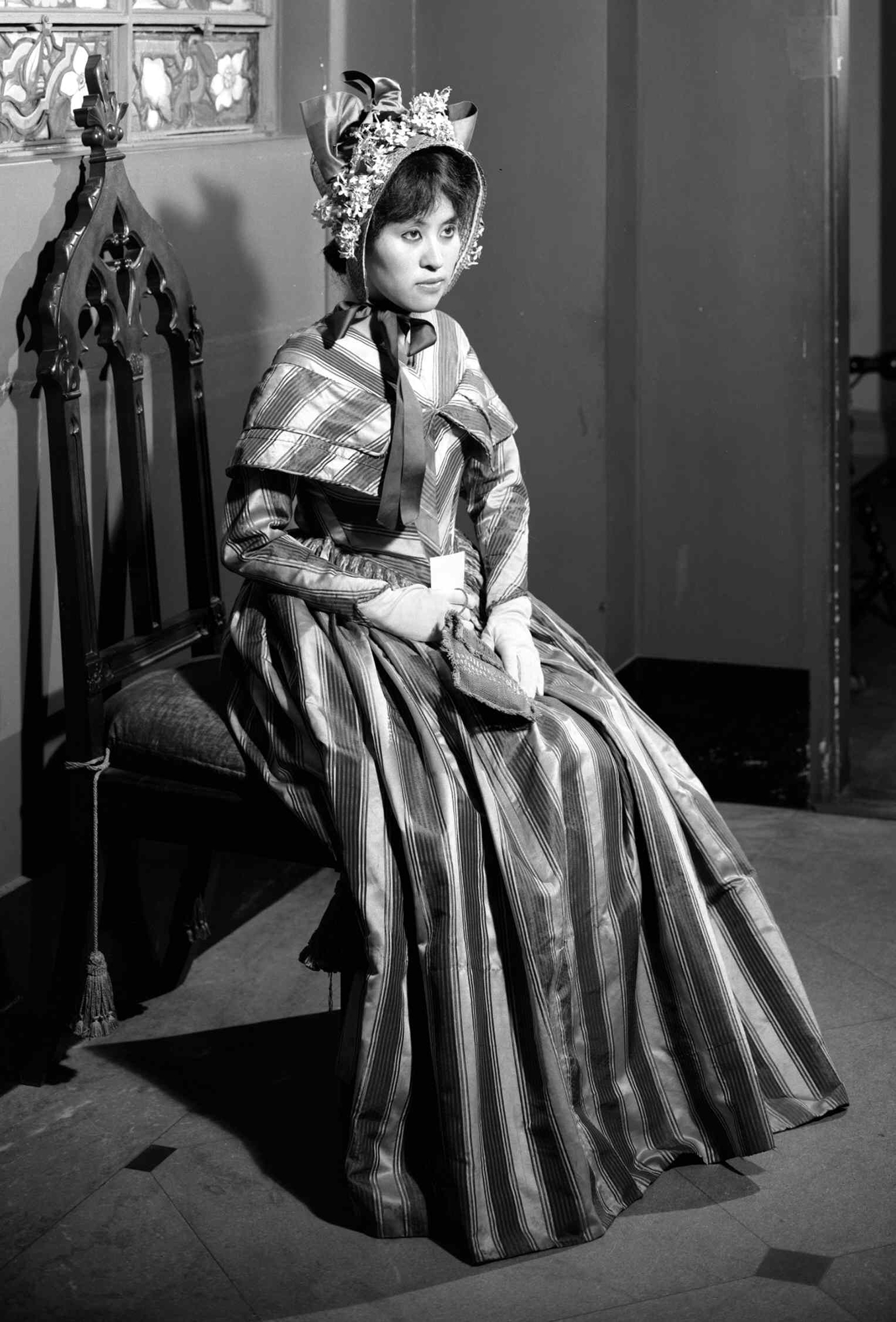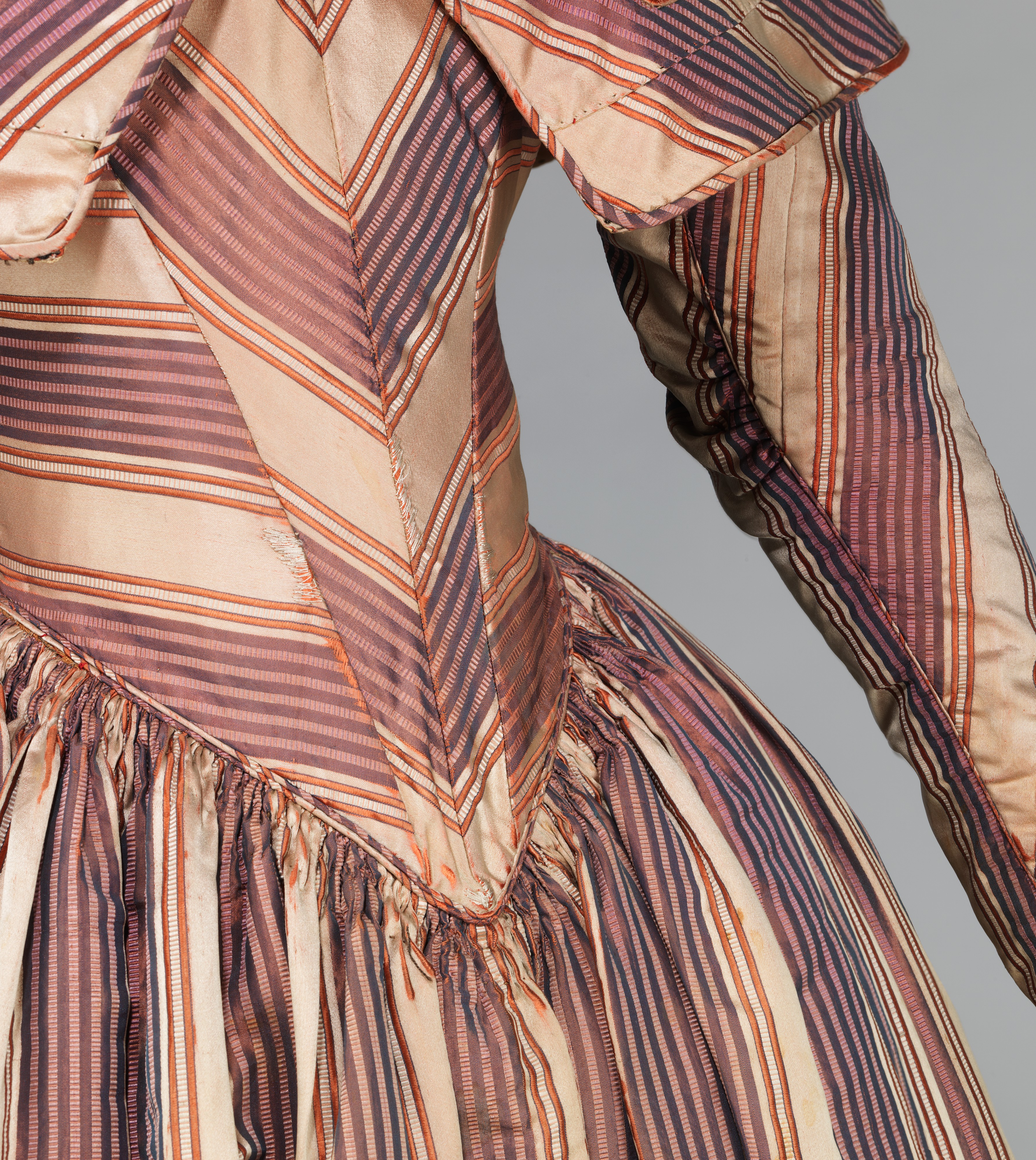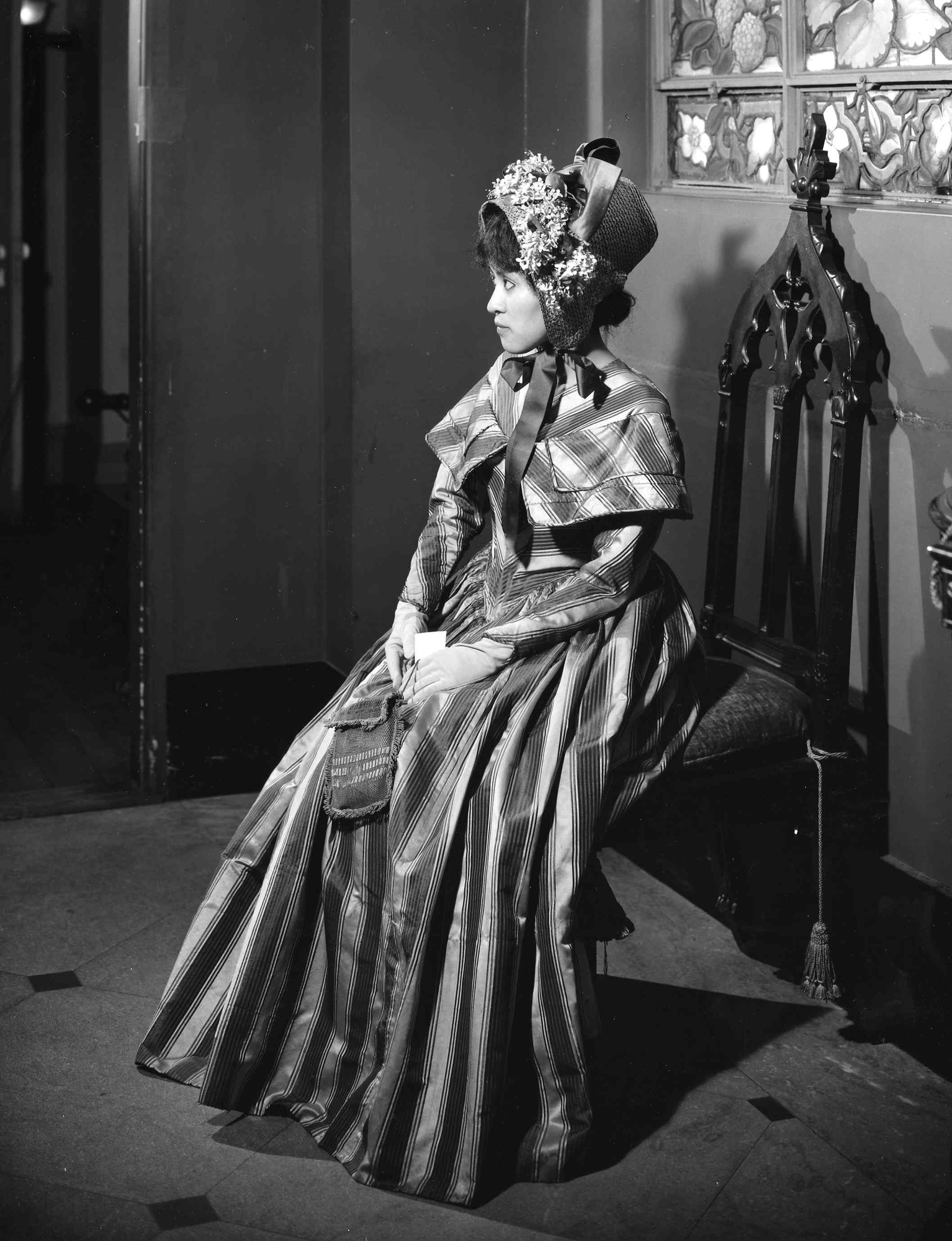Visiting dress
Not on view
The interest of this visiting dress is in the playfulness of the stripes on the bodice which create a mesmerizing effect that is furthermore enhanced by the patterning offered by the self piping. The fit of the bodice, sleeves and bertha give an elongated streamlined effect which was contrary to the large sleeves and higher waist of the decade prior to it. The style emphasizes the inactivity of women who were relegated to various forms of handwork and developing the art of conversation.
The female silhouette of the middle of the 19th century consisted of a fitted corseted bodice and wide full skirts. The conical skirts developed between the 1830s, when the high waist of the Empire silhouette was lowered and the skirts became more bell shaped, to the late 1860s, when the fullness of the skirts were pulled to the back and the bustle developed. The flared skirts of the period gradually increased in size throughout and were supported by a number of methods. Originally support came from multiple layers of petticoats which, due to weight and discomfort, were supplanted by underskirts comprised of graduated hoops made from materials such as baleen, cane and metal. The fashions during this time allowed the textiles to stand out because of the vast surface areas of the skirt and a relatively minimal amount of excess trim.
This image cannot be enlarged, viewed at full screen, or downloaded.
This artwork is meant to be viewed from right to left. Scroll left to view more.






